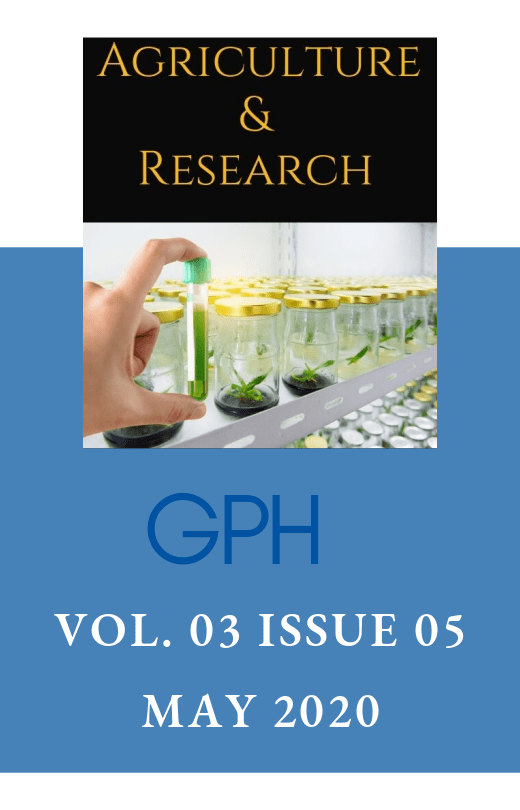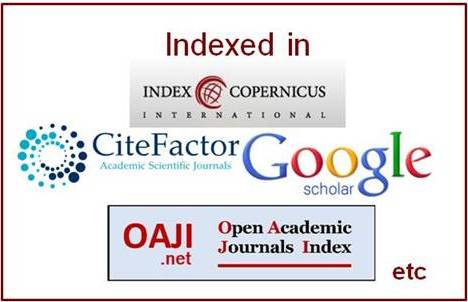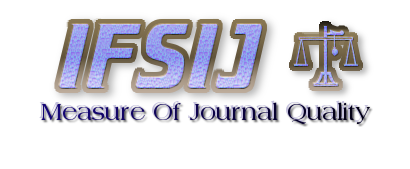INDUSTRIAL REVOLUTION OF AFRICA’S AGRICULTURAL SECTOR A PARADIGM SHIFT TRANSFORMATION
Abstract
Agriculture is still the dominant occupation of over 70% of the African rural farmers. Increasing the operations of Africa’s agriculture is thus very essential in attaining industrial revolution and shift resulting in Africa’s agriculture sector growth and obliteration of poverty in African countries. The sudden break-out of industrial agro-revolution experienced an overwhelming increase in in agricultural outputs and sector development. Improved methods of production involving the use of machines and mechatronics had drastically reduced the use of old methods of cultivation (animal and human labours) which deface agriculture making it a tedious enterprise. Furthermore, the invention and introduction of advanced emerging technologies in agriculture had overhaul the entire sector aligning and fortifying it into a profitable and viable enterprise thus driving agro-industrial revolution cum transformation. This has further increased the level of agricultural productivity in terms of yields, outputs, and overall economic gains. Conclusively, agricultural innovations, revolution and transformations are currently at the third stage of industrial revolution awaiting metamorphosis into the fourth industrial revolution where advanced technologies and its drifts such as the virtual reality (VR), agro-robotics (AR), Internet of Things (IT), and artificial intelligence (AI) are domiciled and seriously changing our work patterns and ways of life. Hence, African governments are to exploit the benefits of industrial revolution via the use of advanced technological tools and inclusive policy instruments to nurture economic growth, sector development and overall transformation of the African economy.
Downloads
References
AMIS, (2018). Homepage [Online]. Agriculture Management Information System. Available: www.namis.gov.np [Accessed 25 November 2018]
Augustine D, Blumenthal D, Springer T, (2018). Elevated CO2 induces substantial and persistent declines in forage quality irrespective of warming in mixed grass prairie. Ecological Applications 28(3): 721–735.
Baldos U.L.C and Hertel T.W (2015). The role of international trade in managing food security risks from climate change. Food Security 7(2): 275–290.
Be´ne´ C, Oosterveer P, Lamotte L, (2019). When food systems meet sustainability – Current narratives and implications for actions. World Development 113: 116–130.
Block, S.A. (1999). Agriculture and economic growth in Ethiopia: growth multipliers from a four-sector simulation model, Agricultural Economics 20 (3): 241-252.
FAO, (2017). Over view of Africa’s Agricultural revolution, emerging facts. FAO, Rome
Gilani H, Shrestha HL, Murthy M, Phuntso P, Pradhan S, Bajracharya B, (2015). Decadal Land Cover Change Dynamics in Bhutan, Journal of Environmental Management. 1:1-10
Herrero M, Thornton PK, Power B, (2017) Farming and the geography of nutrient production for human consumption. The Lancet Planetary Health 1: 33–42.
Jacoby HG, Minten B. (2009). On measuring the benefits of lower transport costs. J. Dev. Econ. 89(1):28–38
Larson, D. F., Otsuka, K., Matsumoto, T., &Kilic, T. (2014). Should African rural development strategies depend on smallholder farms? An exploration of the inverse‐productivity hypothesis. Agricultural Economics, 45(3), 355-367
Marenya, P.P. and C.B. Barrett (2007). “Household-level determinants of adoption of improved natural resources management practices among smallholder farmers in western Kenya,” Food Policy 32(4): 515-536.
McCullough, E.B. (2015). Labor productivity and employment gaps in Sub-Saharan Africa. World Bank Policy Research working paper; no. WPS 7234
McMillan, M.S., and K. Harttgen (2014).“What is driving the ‘African Growth Miracle’?” National Bureau of Economic Research Working Paper Series No. 20077
Munang R., and Mgendi R. (2015). Africas Broken Food Security Value Chain: Unravelling the Hidden Fortune, Modern Ghana. https://www.modernghana.com/news/646985/1/africas-broken-food-security-v.html, International Association of Agricultural Economists, 35(1):79-89
Mundlak, Y. (2000). Agriculture and Economic Growth: Theory and Measurement. Cambridge, MA: Harvard University Press.
Osuji, E. E. (2017). Impacts of Sustainable Soil Management Techniques on Land Productivity and Poverty Levels of Arable Crop Farmers in Imo State, Nigeria. Unpublished Ph.D Dissertation. Department of Agricultural Economics, Michael Okpara University of Agriculture Umudike, Nigeria.
Osuji, E.E., Anyanwu, U.G., Ehirim, N.C., Eze, E.U., and Tim-Ashama, A. (2017). Economics of Processed Cassava Products in Imo State, Nigeria. Journal of Research in Business and Management, India, 5(3):09-19
Paarlberg, R. L. (2002). “The real threat to GM crops in poor countries: Consumer and policy resistance to GM foods in rich countries.” Food Policy 27(2): 247–50
Robinson, J. (2011). Industrial Policy and Development: A Political Economy Perspective. Annual Bank Conference in Development Economics 2010. Washington D.C.:World Bank.
Sheahan, M. and C.B. Barrett (2014) “Understanding the agricultural input landscape in sub-Saharan Africa: Recent plot, household and community-level evidence.” World Bank Policy Research Working Paper no. WPS7014.
Stifel, D. and B. Minten. 2008. Isolation and agricultural productivity, Agricultural Economics, International Association of Agricultural Economists, 39(1), 1-15
Stifel, D., B. Minten, and B. Koro. (2012). Economic Benefits and Returns to Rural Feeder Roads: Evidence from a Quasi-Experimental Setting in Ethiopia. IFPRI Ethiopia Strategy Support Program II, ESSP II Working Paper 40. Washington, DC: International Food Policy Research Institute
Swinnen, J. (2011). The right price of food. Development Policy Review, 29(6): 667-688.
Taffesse A., Tadesse F. (2017). Pathways Less Explored Locus of Control and Technology. Adoption, Journal of African Economies 26 (3): 1-10
Tashi-Dendup (2018). Agricultural Transformation in Bhutan: From Peasants to Entrepreneurial Farmers. Asian Journal of Agricultural Extension, Economics & Sociology. 23 (3) 1-8.
Thurlow, J. and D.E. van Seventer. (2002). A standard computable general equilibrium model for South Africa. TMD Discussion Paper. Washington, DC: International Food Policy Research Institute.
Tiffin, R. and X. Irz, (2006). Is agriculture the engine of growth? Agricultural Economics,
International Association of Agricultural Economists, 35(1), 79-89
Tombe, T. (2012). The missing food problem. Working Paper. Department of Economics, University of Calgary.
Wade, R.(2003). Governing the Market: Economic Theory and the Role of Government in East Asian Industrialization. Princeton, NJ: Princeton University Press
World Bank, (2018). Worlld bank reports on industrial transformations. The way forward?. Worldbank, Washington, D.C.
WorldBank (2018). Global Monitoring Report (2013): Rural Urban Dynamics and The Mille- nnium Development Goals. Washington, DC: The World Bank.
Copyright (c) 2020 GPH - International Journal of Agriculture and Research →

This work is licensed under a Creative Commons Attribution-NonCommercial-NoDerivatives 4.0 International License.
Author(s) and co-author(s) jointly and severally represent and warrant that the Article is original with the author(s) and does not infringe any copyright or violate any other right of any third parties, and that the Article has not been published elsewhere. Author(s) agree to the terms that the GPH Journal will have the full right to remove the published article on any misconduct found in the published article.

























